Planting for Winter Scent
Creating winter interest for the senses.
Winter can be a tricky time of year for providing colour, but thankfully, you can still create interest within your green space, particularly through scent. Creating a garden for winter scent allows you to enjoy the space in the colder months of the year, when many plants go into winter dormancy. These plants have adapted to survive and thrive in the coldest of temperatures, and provide stunning colour and fragrance to outdoor spaces. Their flowers can help to create an inviting outdoor area and a place for relaxation, as well as a sensory experience. Scented plants are recognised for promoting mental wellbeing, helping us to feel calm and reduce stress.
Some plants boast an intense floral scent, whilst others provide sweet, or musky scents. Plants with similar fragrances can be combined to complement one another, e.g. those with a sweet scent, such as Chimonanthus praecox and Viburnum × bodnantense ‘Dawn’. Grouping plants by scent can be beneficial, as subtle scents are calming, whilst more intense scents can promote a stimulating environment.
It’s important to think about the positioning of fragrant plants. Providing plants with their specific light and soil needs will help them to thrive, and in turn, will maximise the fragrance they offer. If you are planting within a border, position smaller scented plants near the front, to benefit from their fragrance. When planting along a pathway, select fragrant plants that will release a lovely scent when brushed past. Planting them in sheltered positions in your garden will further promote the scent they give off, as their fragrance can be kept more contained. Planting near a seating area or entrance will help individuals to fully appreciate the scent. In addition, raised beds can be ideal for fragrant plants to bring them closer.
In addition to humans, the scent from plants is a benefit to pollinators, as it acts as a signal for them to track down specific flowers. Sometimes, plant fragrance can protect the plant by acting as a repellent to predators and pests. For example, Rosmarinus officinalis has an intense fragrance that deters mosquitos and gnats.
In addition to the flowers, some plants have aromatic foliage that contains essential oils, such as Lavandula and Rosmarinus officinalis; the foliage on these species have hairs on their leaves, which swell as the oils build up over time, and then release their scent when disturbed through touch or by the wind. Some of these plants are fragrant all year round and so can be endlessly enjoyed.
Did you know?
Flowers that are pollinated by butterflies and bees release their scent in the daytime, whilst those pollinated by bats and moths release their scent during the night.
Our favourite plants for winter scent
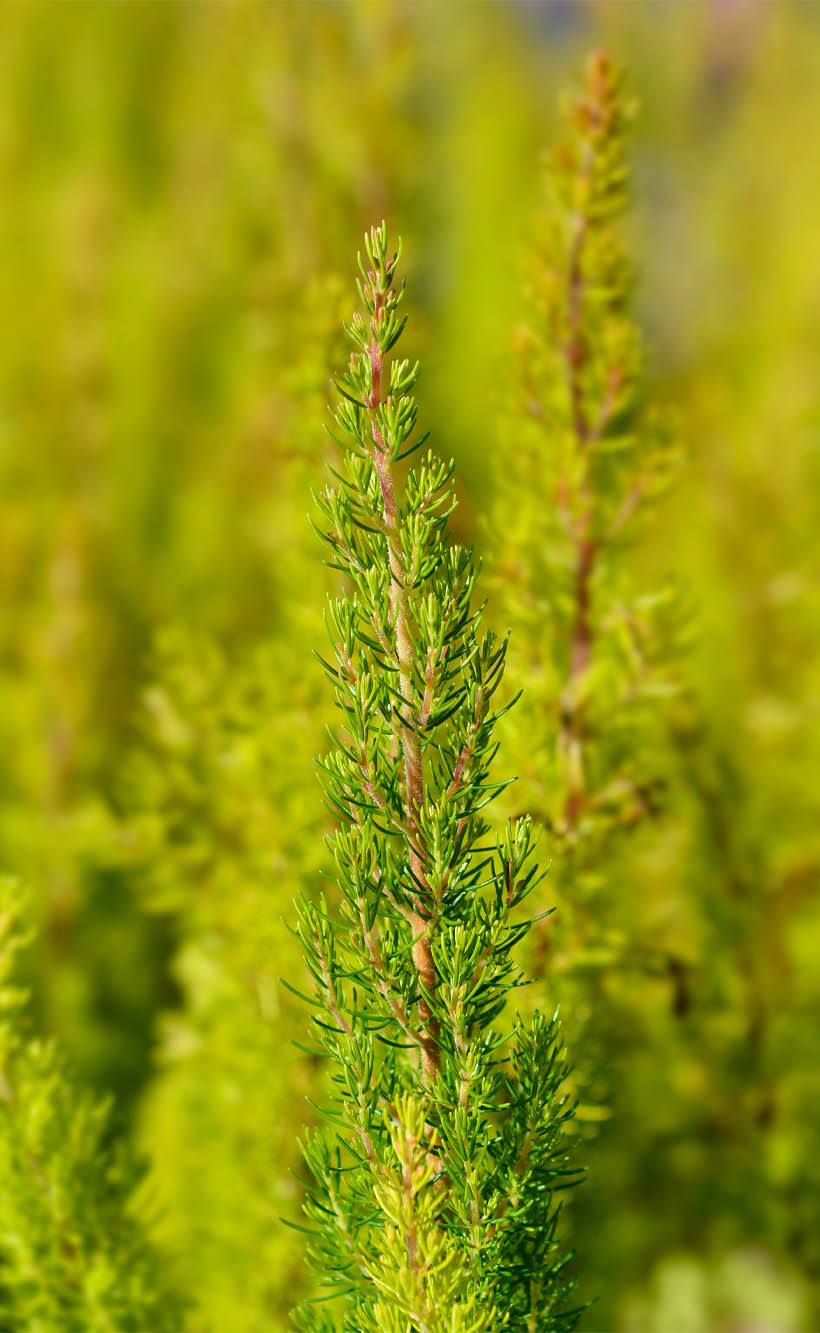
Erica arborea ‘Albert’s Gold’
Chimonanthus praecox
A deciduous sweetly scented shrub, Chimonanthus praecox boasts yellow flowers on bare branches from January to February. Its leaves are lance shaped and dark green in colour. Commonly known as wintersweet, its fragrance makes it ideal for planting near an entrance. It can also be trained against a wall, and prefers full sun, with a sheltered position.
Daphne odora
A small evergreen shrub that grows up to 1.5m in height. Daphne odora has sweetly scented pink and white flowers from late winter to early spring, with dark green leathery leaves. These are followed by red fruits. Daphne odora prefers a sheltered position in full sun to partial shade, and works well planted in flower borders and beds.
Erica arborea ’Albert’s Gold’
Lovely for bringing late winter scent, Erica arborea ’Albert’s Gold’ is an evergreen shrub with soft golden foliage and honey-scented white flowers. It’s ideal for containers and prefers well-drained soil in a sheltered, sunny position. Grows up to around 2m in height.
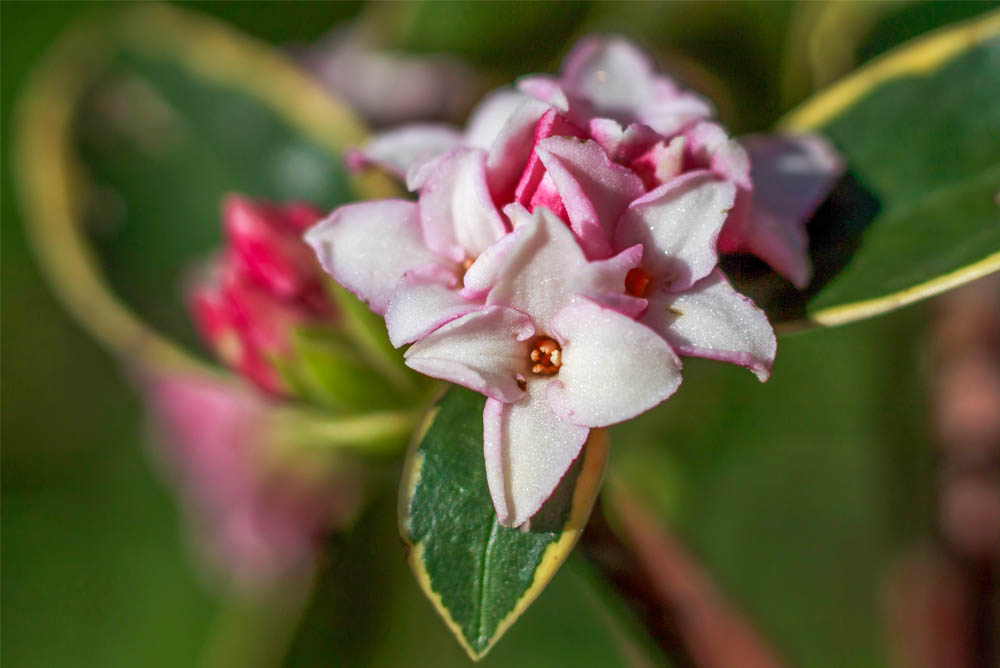
Daphne odora
Iris unguicularis
An evergreen perennial that has grass-like leaves and highly fragrant deep violet winter flowers, with white and yellow markings on the falls. Commonly known as Algerian iris, Iris unguicularis is great for planting on banks and slopes, in borders, and containers. Grows up to around 30cm in height and prefers full sun, in a well-drained soil.
Lavandula angustifolia
Lavandula angustifolia is a bushy, aromatic shrub with grey-green foliage and long stalks bearing dense spikes of violet flowers from around July to September. Its attractive scent makes it great for edging pathways. Lavandula is highly favoured by bumblebees, as their long tongues allow them better access to nectar. Prefers full sun in a sheltered position, in well-drained soil.
Lonicera × purpusii ‘Winter Beauty’
A deciduous shrub with dark green, ovate foliage that grows up to 2m in height. It has highly scented, cream-white tubular flowers on bare branches in winter and early spring, which can sometimes be followed by red berries. Ideal for planting near a walkway or seating area, to appreciate the strong scent. Works well with summer flowering plants that can take centre stage in the hotter months, as it’s not that impressive during this time of the year. Prefers full sun or partial shade positioning.
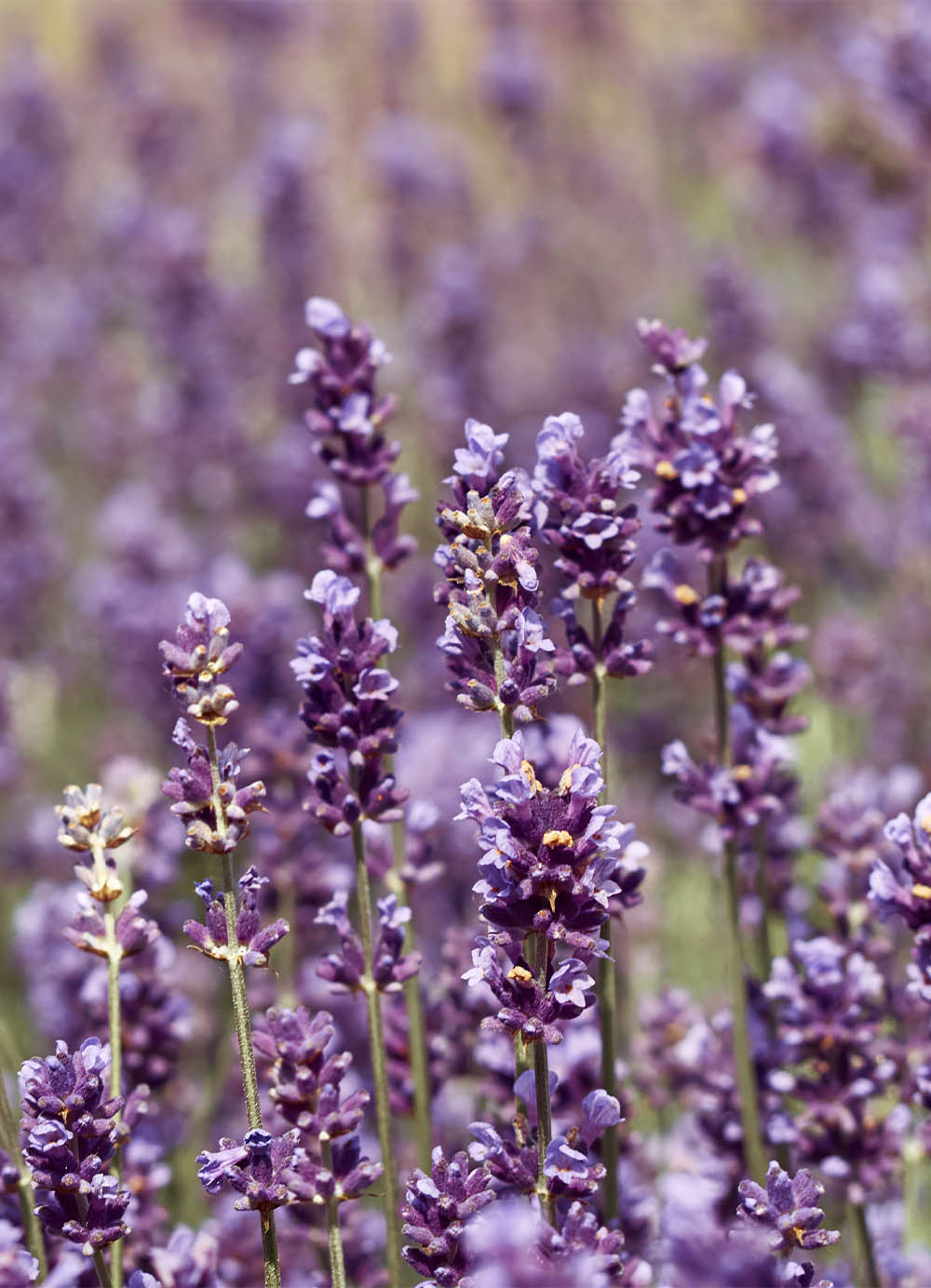
Lavandula angustifolia
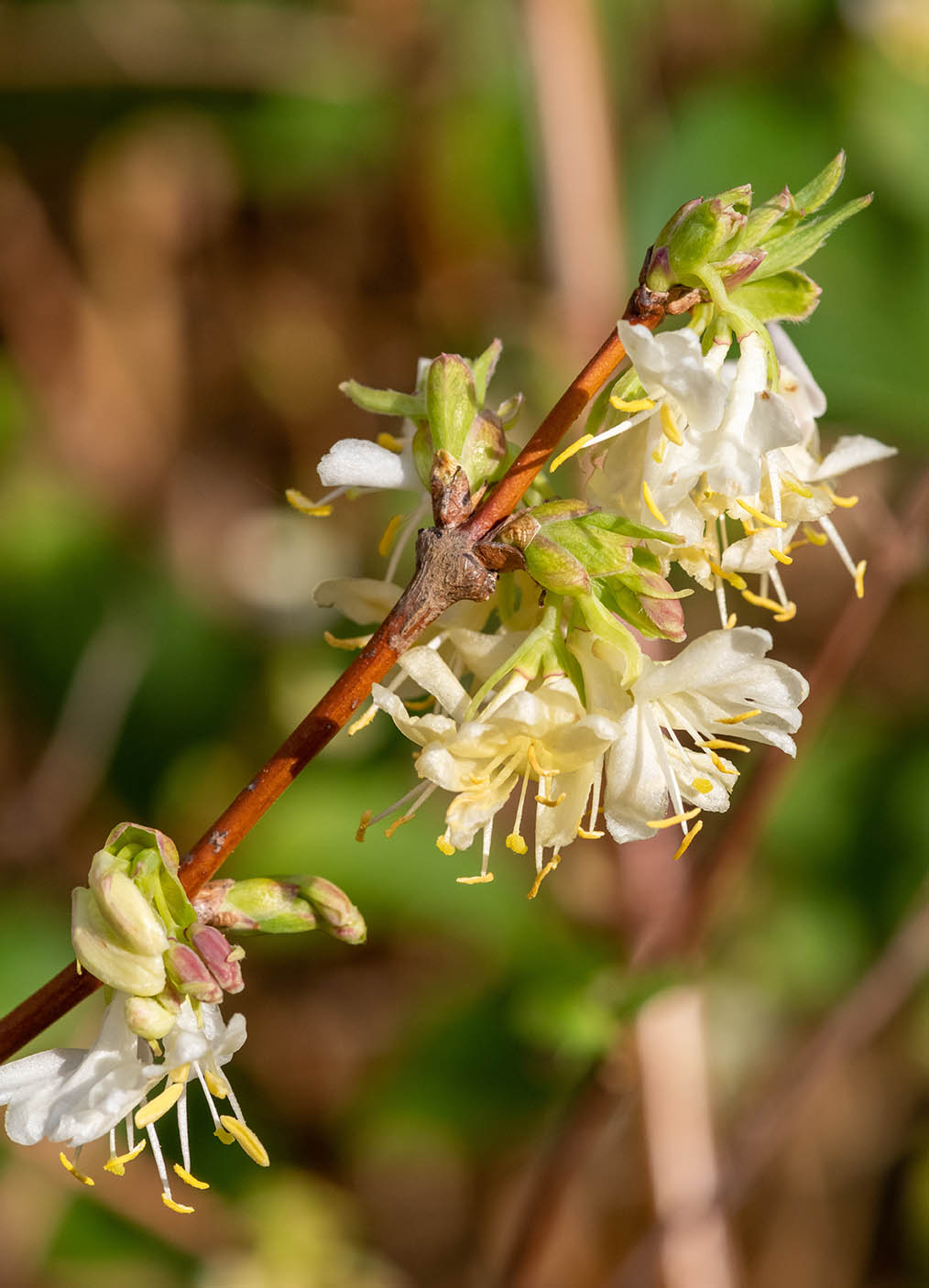
Lonicera × purpusii ‘Winter Beauty’

Mahonia × media ‘Winter Sun’
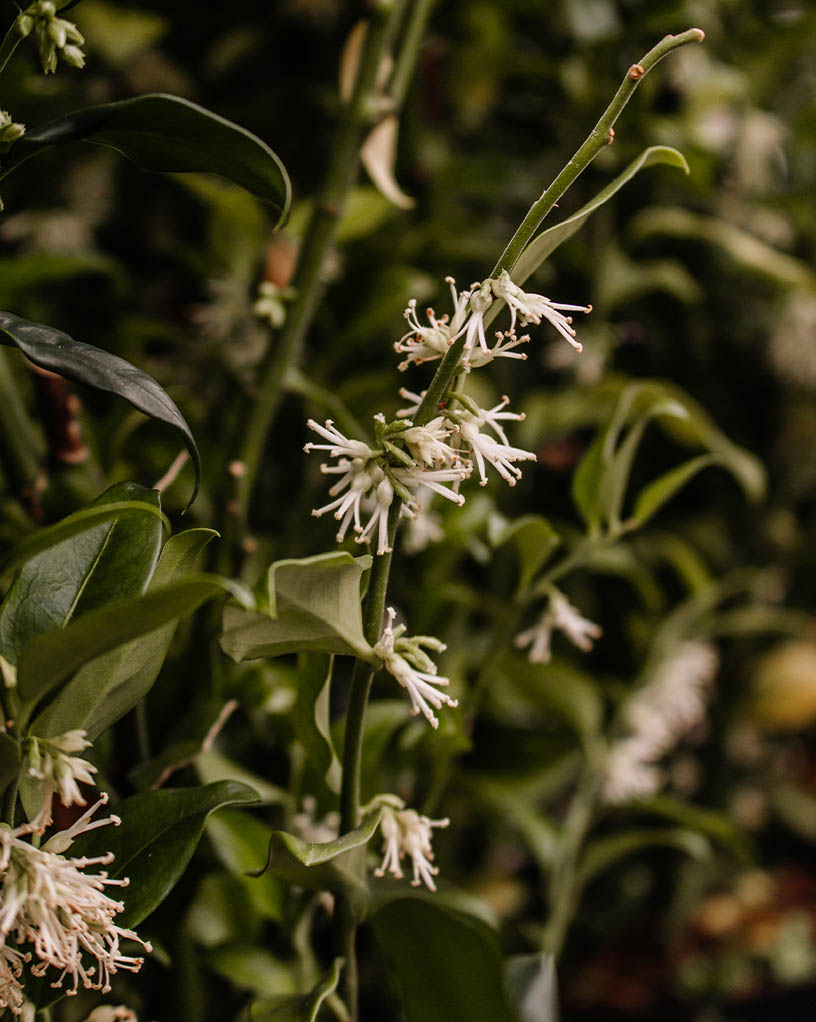
Sarcococca confusa
Mahonia × media ‘Winter Sun’
Mahonia × media ‘Winter Sun’ is an evergreen upright shrub that grows to around 3m in height. Its leaves are dark green and holly-like, and from November to March it produces clusters of fragrant yellow flavours, which are similar in scent to lily-of-the-valley. Its flowers are followed by blue-black berries. Mahonia × media ‘Winter Sun’ is adored by bees and works well in a wildlife garden. Prefers full shade or partial shade.
Rosmarinus officinalis
This upright evergreen shrub has aromatic, narrow green leaves with white undersides that are widely used for culinary purposes. Pretty light blue to white flowers appear in late spring. Even though Rosmarinus officinalis doesn’t flower in winter, its oils in its foliage are especially concentrated during the winter months, and give off a lovely scent when brushed against. Rosmarinus officinalis is ideal for adding structure to borders and planting along a pathway. Prefers full sun in a sheltered position.
Sarcococca confusa
Sarcococca confusa is a dense, winter flowering evergreen shrub with glossy dark green leaves. Its white winter flowers are highly fragrant with their honey-like scent. It also produces berries in the summer months. Sarcococca confusa is lovely for planting along pathways, and is also ideal for container planting. Grows up to around 2m in height. Position Sarcococca confusa in full or partial shade, in a sheltered spot.
Skimmia × confusa ‘Kew Green’
Skimmia × confusa ‘Kew Green’ is a compact, dome-shaped shrub that grows to around 1m in height, with aromatic, glossy green foliage. Produces large clusters of fragrant green-yellow flower buds that open to creamy-white flowers in late winter and spring. Grows well in partially or fully shaded spots, in moist, well-drained soil.
Viburnum × bodnantense ‘Dawn’
A tall deciduous shrub with dark green, ovate leaves and clusters of sweetly-scented pink flowers on bare stems from November. Brings lovely winter colour with its pretty flowers and can be enjoyed near a seating area or entrance. Prefers full sun or partial shade, and grows up to around 3m in height.
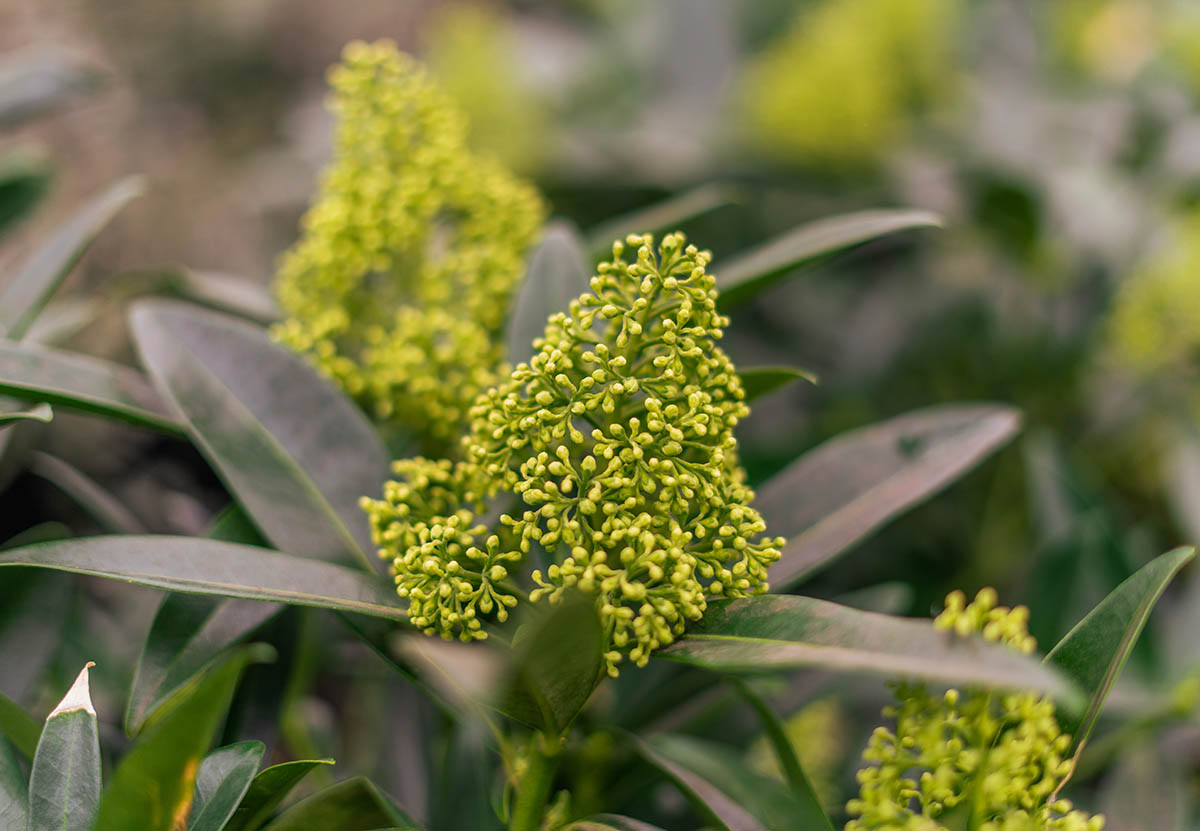
Skimmia × confusa ‘Kew Green’
If you’d like more information on planting for winter scent, contact the G Team today.

